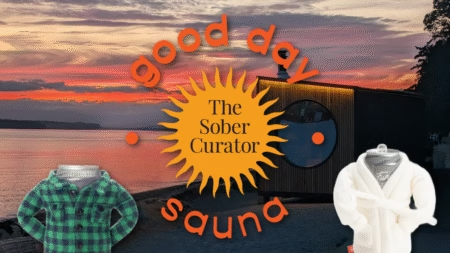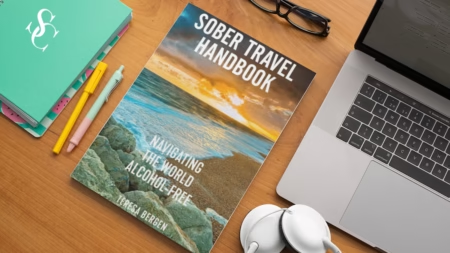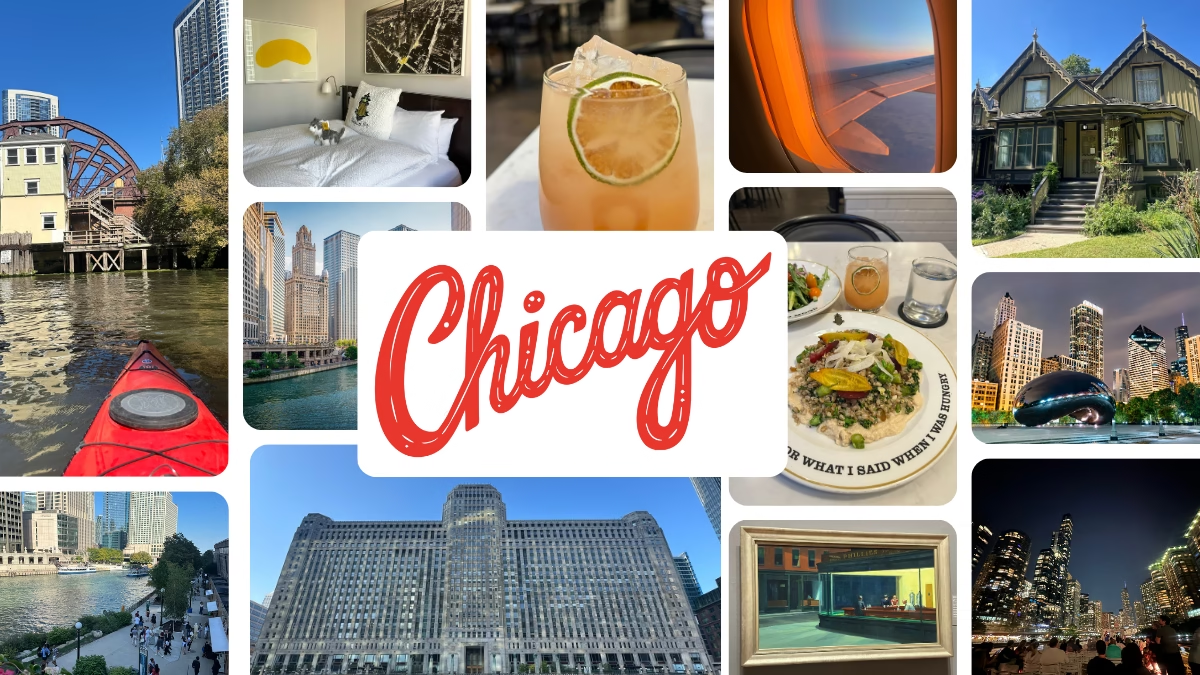
It always pisses me off when historians blame the temperance movement for the rise of organized crime. They say that Prohibition, that thwarted effort to ban alcohol, gave the Mafia its big opportunity to shine. But I blame addiction itself, not people who fight it.
Spending a few days in Chicago — famous for Al Capone and his gang — made me ponder this weighty historical question. I hadn’t visited since I was a teenager, which was quite a few years ago. And the older I get, the more of a nature person I am. So I was surprised how much I loved America’s third largest city. It’s a vibrant place, and I caught it in perfect September weather, the streets teeming with people out for fun.
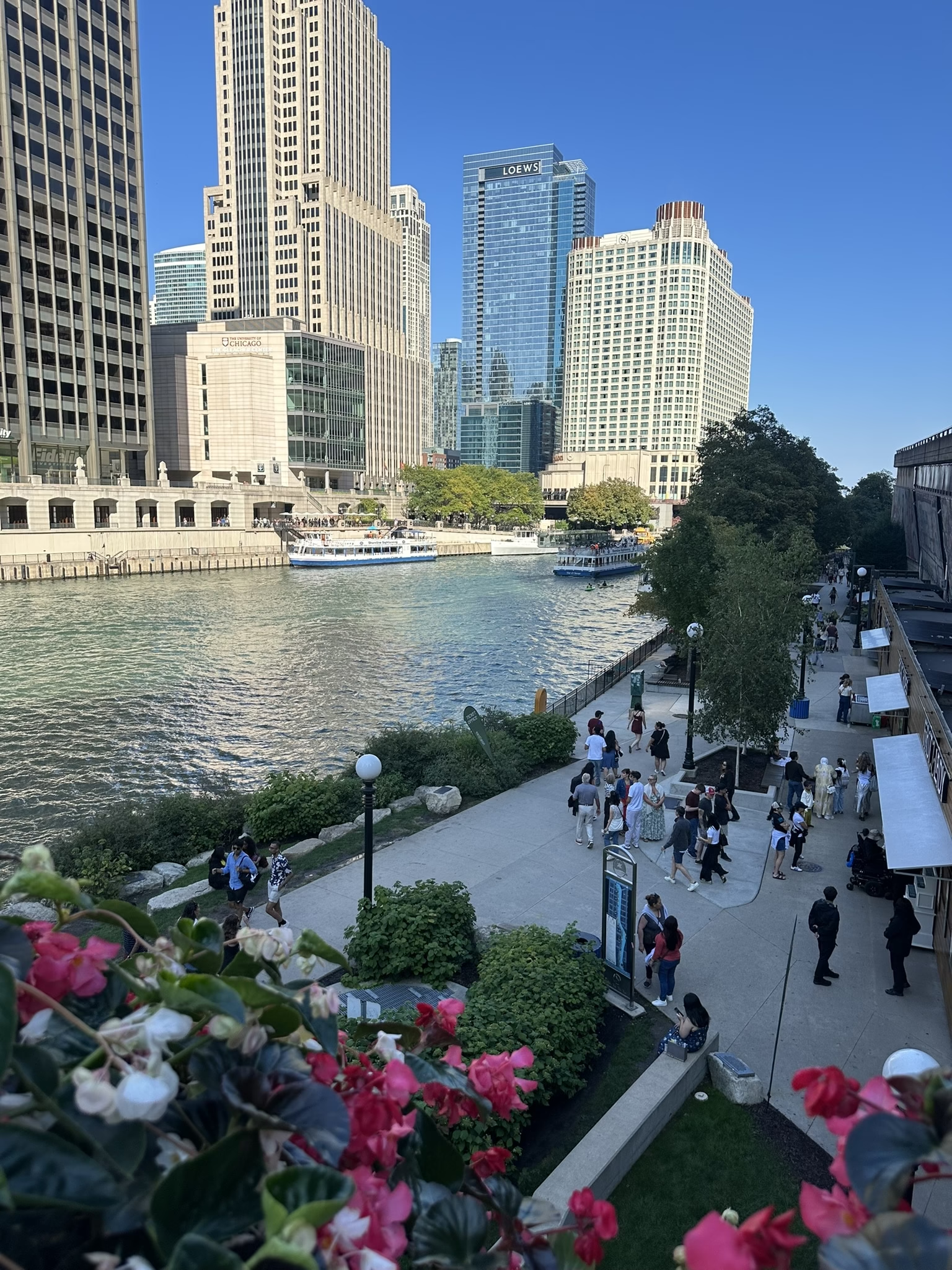
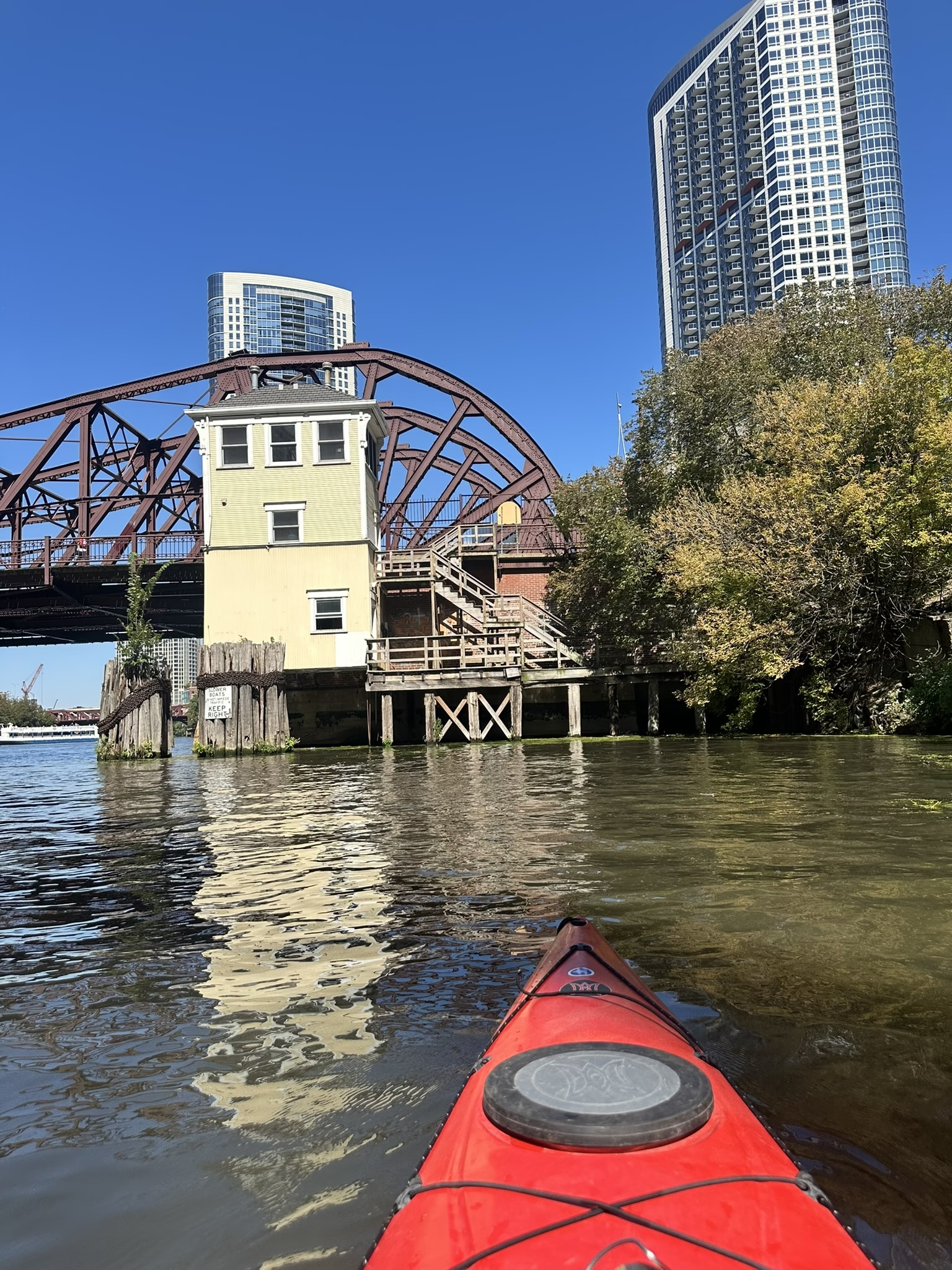
Staying downtown by the river, doing the touristy stuff
I stayed downtown at inside what’s known as the Loop — a densely populated 1.58-square mile-area bordered by the elevated train tracks. While more experienced Chicago travelers probably enjoy staying in different neighborhoods, the Loop is good if you want to do all the big first-time-in-Chicago touristy things.
So, what’s so gorgeous about Chicago? The buildings. I didn’t think I liked skyscrapers, but I couldn’t stop looking at all the marvels of Chicago’s skyline. Buildings from the 1800s, Art Deco masterpieces and shiny modern glass examples all live together in downtown Chicago. And the skyline is best seen from the river.
I’m not the only one who thinks so, judging by the architecture boat tours careening around downtown and all the folks walking and dining along the 1.25-mile Riverwalk. My second day in Chicago, I took an excellent three-hour kayak architecture tour in the morning and a 90-minute boat architecture tour with Shoreline Sightseeing after dark to see the buildings all lit up. Both were fantastic.
Will Nelson, a schoolteacher during the school year and a kayak guide with Kayak Chicago in summer, led my tour on a Monday morning. I’ve done a lot of urban kayaking, and this was my favorite place yet. We paddled through the Wild Mile — a revitalized area of the river with floating gardens and 60 species of fish — gazed up at skyscrapers and got thrillingly close to enormous barges.
My first night, I took the Gangsters and Ghosts walking tour. This popular tour had 25 people on a Sunday night in September! The tour goes year-round. If you like a more intimate tour, try going in February. But you might not get my compelling guide, Max Wilson. After a negative four-degree tour last season, this Florida transplant says he’s calling in sick if that happens again. If Max’s boss is reading this, I’m sure he was just kidding.
The tour was a very nice mix of ghosts and gangsters. I love ghost tours because you learn history in an entertaining way. The whole group hung on each of Max’s words. We stood in the spot where the North Side gang gunned down Al Capone’s second-in-command along with his bodyguards. We heard about people dying in the country’s biggest grease fire as they tried to flee the Chicago fire of 1871 by jumping in the river — which was full of flammable animal parts thrown in by butchers. (While a cow is often blamed for starting the fire by kicking over a lantern, another theory has a human dropping a lantern while looking for beer for a party.) We felt the creepy vibes of an allegedly fireproof theater that wasn’t — killing more than 600 children, who were laid out in the frozen alley side by side for safekeeping until morgue space became available. It was gruesome! Not your kinder, gentler ghost tour.
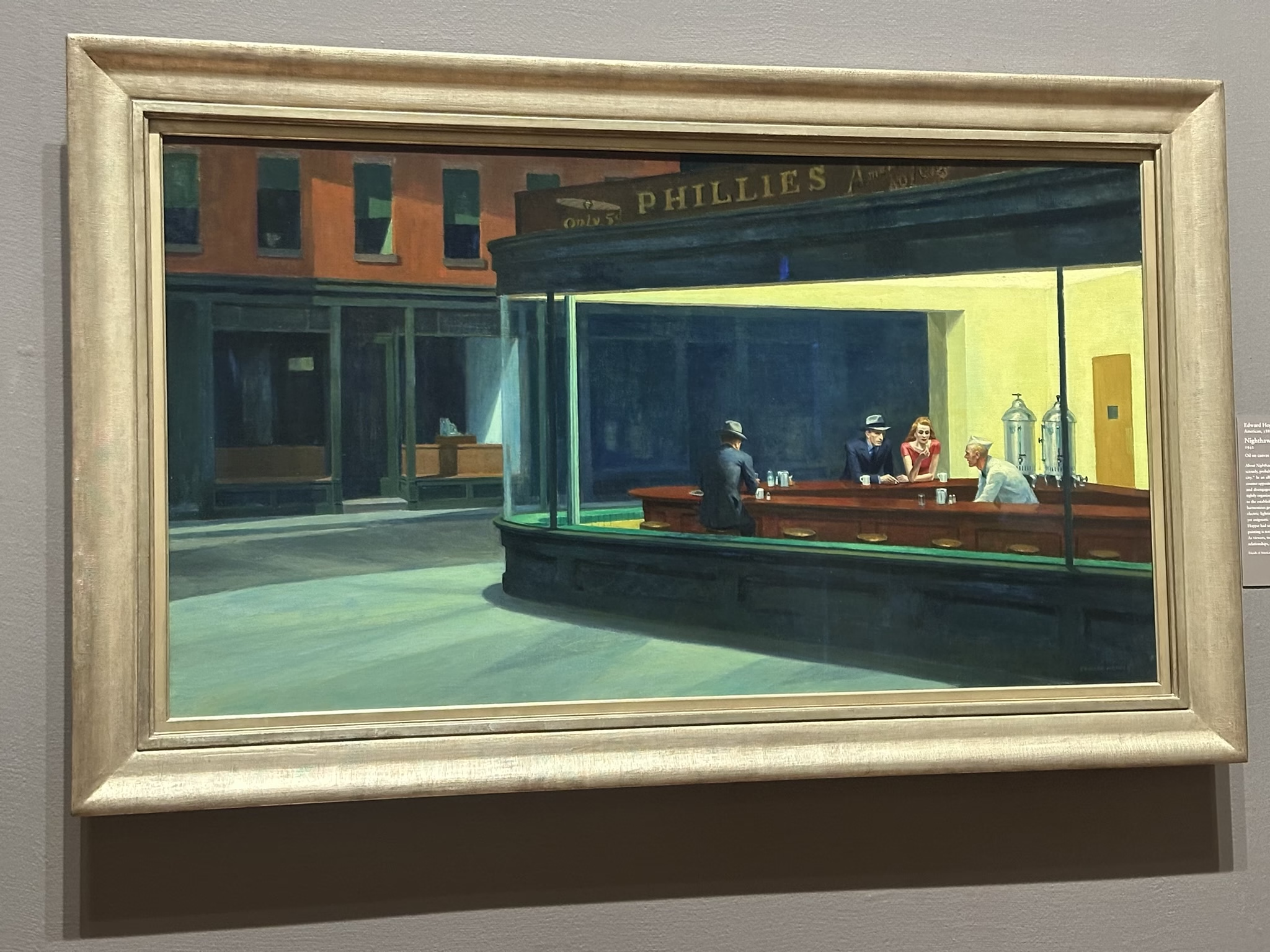
Tons of museums
Chicago is known for excellent museums. And if you want to visit several, consider investing in the money-saving Chicago City Pass. The pass gets you into five top attractions and is good for nine days.
I didn’t have time to go to as many museums as I wanted, so I had to prioritize. Number one for me: the Art Institute of Chicago. Many paintings that you’ve seen mass-produced in calendars live here. My highlight was seeing Edward Hopper’s “Nighthawks” in person. It was my favorite painting in the board game Masterpiece that I played in my childhood. In person, the painting of people in a big city diner in the middle of the night was bigger and more vivid than I expected, with its uncertain mood and striking teal and earthy dark red tones.
I squeezed in two less-famous museums. The McCormick Bridgehouse & Chicago River Museum is housed in the tall and skinny five-story home of a former bridge tender. Chicago has more bridges than any city I’ve visited, and at one time they all went up and down. This employed a lot of people! The Bridgehouse Museum chronicles river history and modern-day conservation efforts.
As a fan of medical museums, I was thrilled to make a last-minute trip to the International Museum of Surgical Science. Fascinating, but not for the squeamish. As someone who’s had a ton of skin cancer surgeries, I was intrigued by the display on the history of plastic surgery arising from the horrific facial disfigurements of World War I. I really owe those early surgeons! The dioramas of early amputations and other surgeries are sure to thrill gore hounds. Of special interest to addicts is a display on how pills were originally made — either by compressing tablets or by mixing powder, sugar and water and rolling them. I also learned that ether was originally used as a recreational drug in the early 1800s, when people had “ether frolics.” Somebody realized it could be used for anesthesia starting in 1846. I pity the patients of 1845.
Next time I’m in Chicago, I hope to visit the Museum of Post Punk & Industrial Music. It’s owned and operated by Martin Atkins, who was in Pigface and other bands I remember from my youth.
Chicago AF
During my three days in Chicago, I hit some of the popular highlights and spent a day with one of my oldest friends who recently moved there. But if I had more time, I would have uncovered some of the city’s sober gems.
Before my trip, I talked on the phone with one of Chicago’s leading nondrinkers, Carrie May. Carrie started Chicago AF in October 2020. Her all-volunteer organization offers low-key monthly meetups for brunch, coffee and a book club as well as bigger events. Carrie has partnered with other Chicago organizations to offer an Ocsober Fest in Lincoln Park Zoo, an evening of mocktails in Morton Arboretum, a no-booze cruise on Lake Michigan and annual group outings to Cubs games.
Carrie was about four years sober when she started Chicago AF. “People weren’t really recovering out loud at that time,” she told me. The sober scene was more about small gatherings after twelve-step meetings. “I wanted more spark than that.”
Chicago AF offers “more of an elevated social vibe, which is what I was looking for,” she said. “It’s fun to drink when out. I think it’s especially important for the younger generation to not feel othered.” Carrie knows all the best places to get mocktails and have sober fun. She recommends the NA bottle shop In Good Spirits, sober hangout spot Solar Intentions, NA beer brand Go Brewing’s tap room and Eli Tea Bar for the tea drinkers.
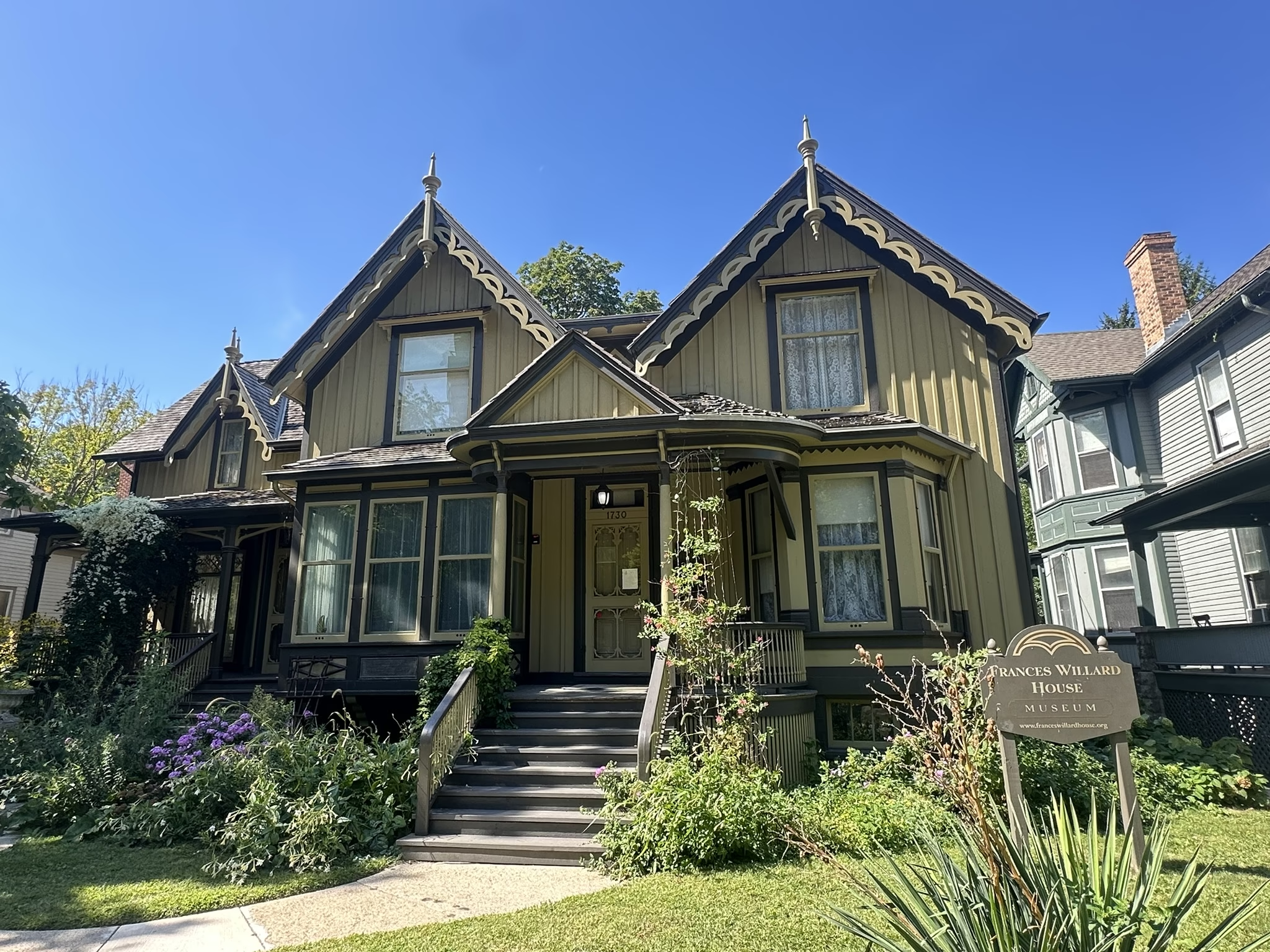
My heroine, Frances Willard
While I love a good mocktail, my idea of sober fun sometimes involves delving into the history of addiction. My number one reason for visiting Chicago was to tour the Frances Willard House Museum in Evanston, a small town just north of the big city.
Have you heard of Frances Willard? If not, don’t say that to Nancy Schultz, volunteer archivist and all-around champion for keeping Frances’ name alive. Frances Willard was the president of the Woman’s Christian Temperance Union (WCTU) from 1879 until her death in 1898. The WCTU was the leading anti-alcohol group in the late 1800s and was also involved in other types of social reform.
Nancy, dressed in an adorable black-and-white polka-dotted dress and vintage jewelry, gave me a thorough tour of Frances’ 1865 house. The house is still the headquarters of the WCTU, which continues to print materials warning against the dangers of alcohol to an often-deaf public. I can relate to that!
Nancy spoke passionately and tenderly about the late 19th-century women who wanted to ban the liquor trade. And for anyone who thinks temperance ladies were killjoys who should mind their own business, she concisely summed up their problem of drunk husbands.
“Yes, some people get violent. Other people use up all the money, so the wife can’t buy food and take care of the children. But it’s even worse than that, because the wife can’t leave because she’s not educated. Her husband provides a roof over her head, all of her food, all of her spending money, if there is any spending money. And she can’t leave him because women, even historically, have been the poorest of the poor of the Americans. Because if you’re not under the care of a husband, you have no money, you’re destitute.”
Frances never married. She was simultaneously a soft-spoken, devout person and a woman who tirelessly educated and lifted the circumstances of other women. She had a super successful life of leading, writing and speaking. The WCTU coached countless women on public speaking and rules of order. One of the organization’s symbols is a gavel, and there were many throughout her home. I got the chance to whack a gavel on a table, making a satisfying thump.
The WCTU also pushed for women’s suffrage and animal rights. In one room, there was a display about Toots, Frances’ white Angora cat. The WCTU sold photos of Toots as a fundraiser! This was where I most related to these long-ago women, as that’s just the sort of thing I’d think up for making money.
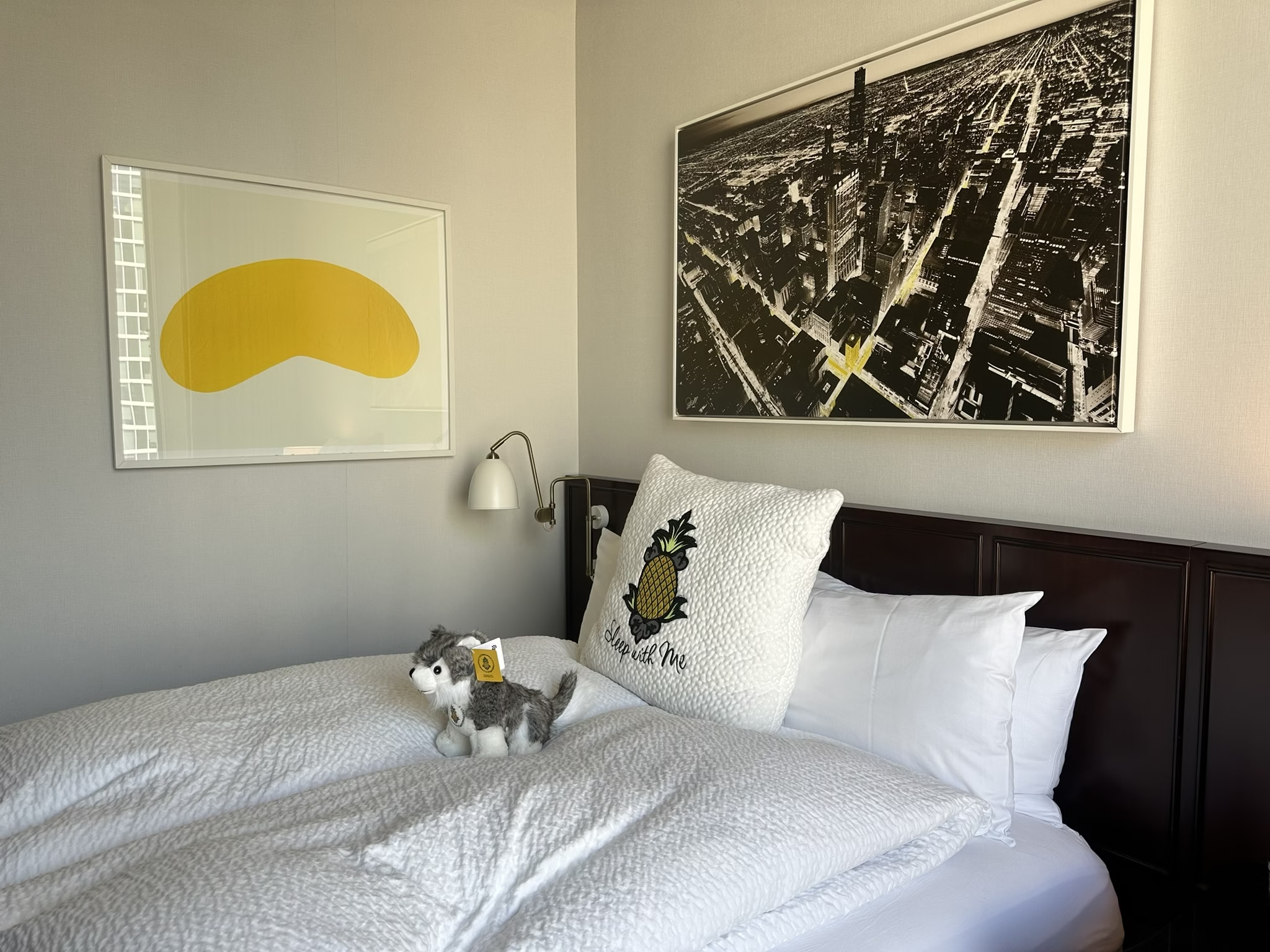
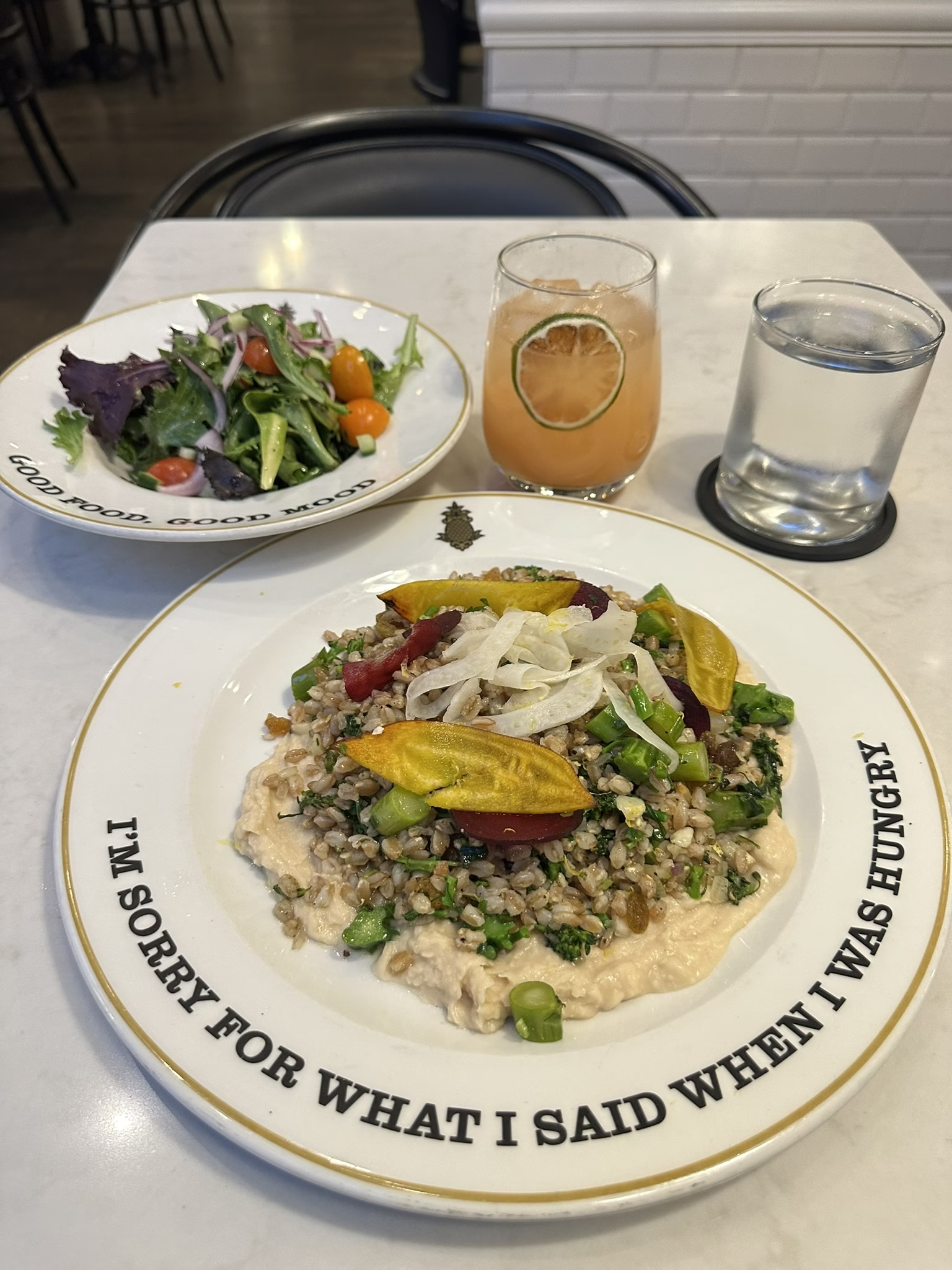
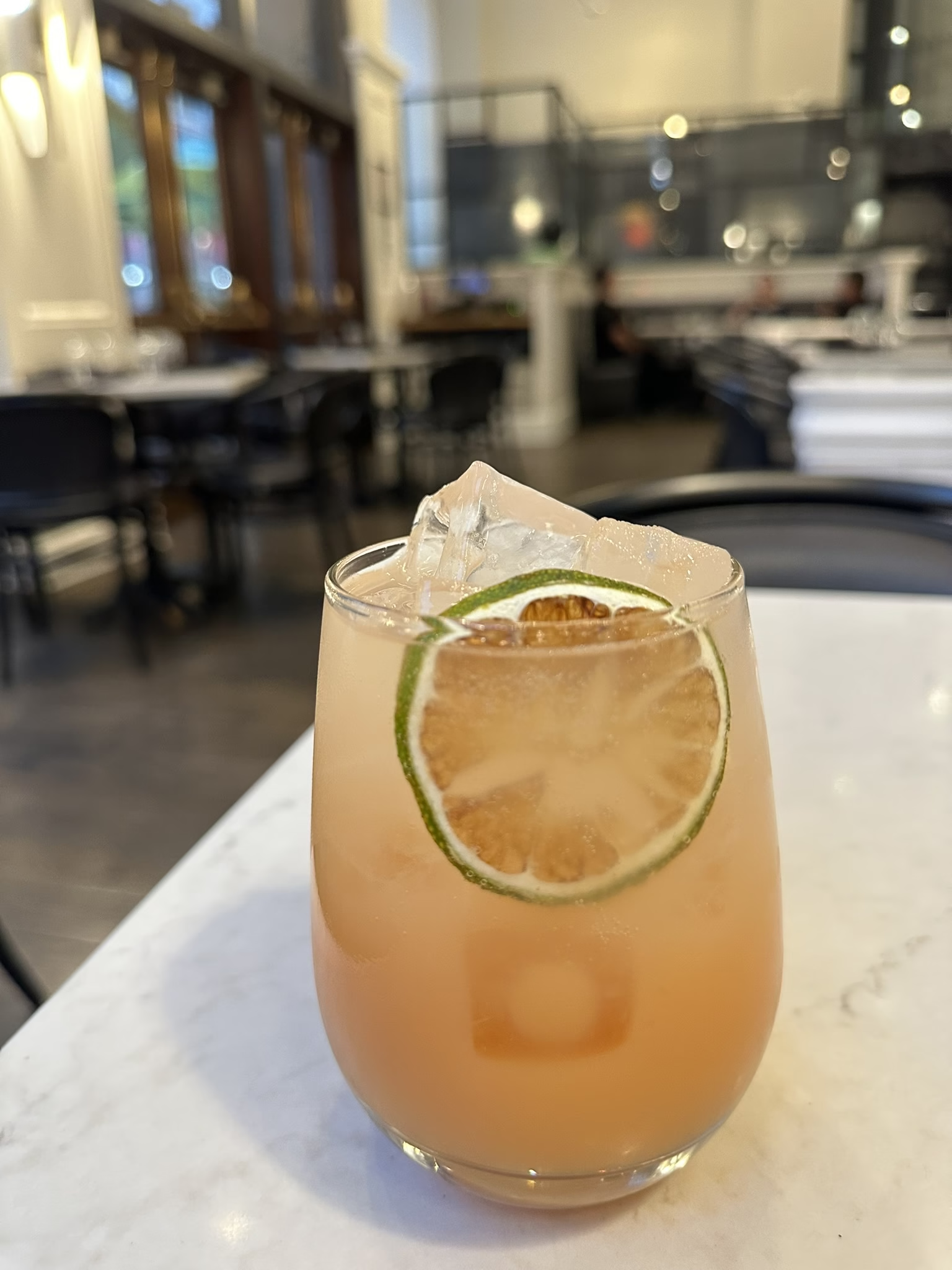
Staypineapple
I spent my three nights at Staypineapple, which is housed in the Reliance Building, built in 1895 and on the National Historic Register. I love this small hotel chain and have twice stayed in its New York location. There’s a cute pineapple theme throughout — even the extra toilet paper roll in my room was covered with green and yellow paper to resemble the fruit — and it’s extremely dog-friendly. I love the downstairs water station where you can fill your bottle with cold, hot or sparkling water. Fancy! And the walls on the fourth floor where I stayed were painted an incredible dark purple, one of my favorite colors. My room had a bathtub — one of my other favorite things — and beautiful Chicago views, especially at night when the skyscrapers light up. Don’t miss the mocktails at the hotel’s Atwood Restaurant — you can order a pineapple fizz or a grapefruit paloma.
There is so much to see in Chicago! Whether you want to delve into the history of temperance and the rise of organized crime, or just watch the river flow by, mocktail in hand, this is one incredible city.
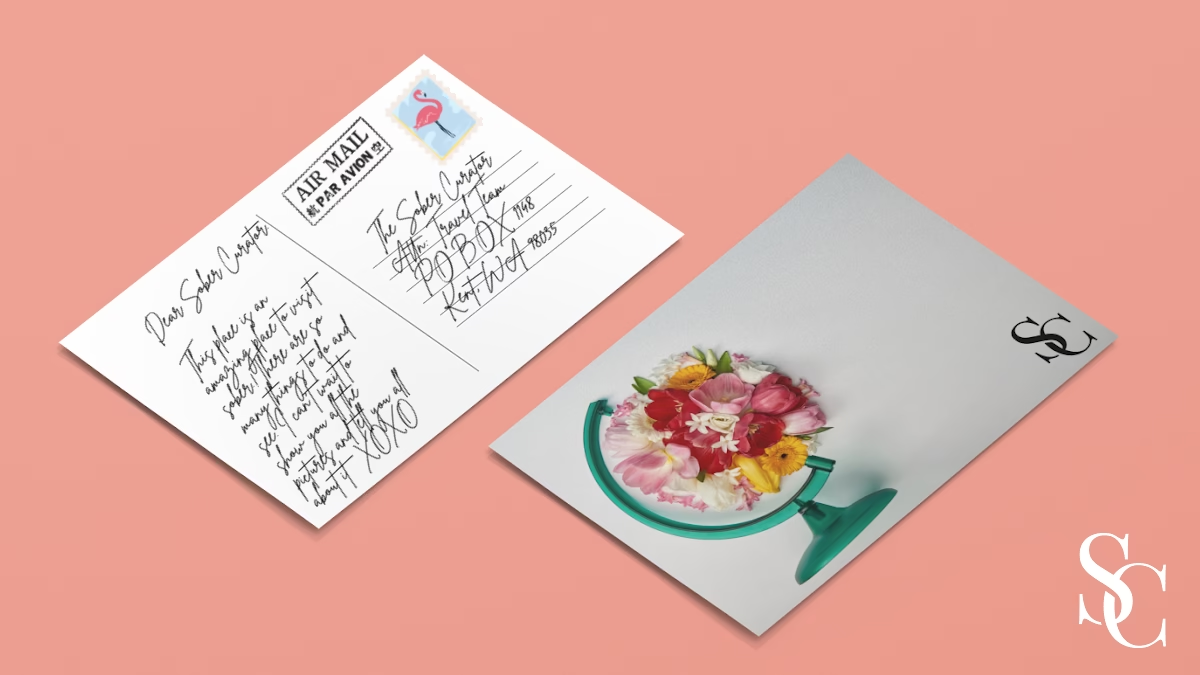
✈️ Sober Adventures Wanted! 🏞️
Have you taken a trip without the booze but with all the epic vibes? Did you hike majestic trails, sip fancy mocktails poolside, or just find a quiet corner of the world where your soul could exhale? We want the juicy details (and the jaw-dropping pics)! The Sober Curator is putting together the ultimate sober travel guide—and your story could be the highlight.
Send us a postcard!
(And by that we mean… save the stamp and shoot us an email. We’re cool like that.)
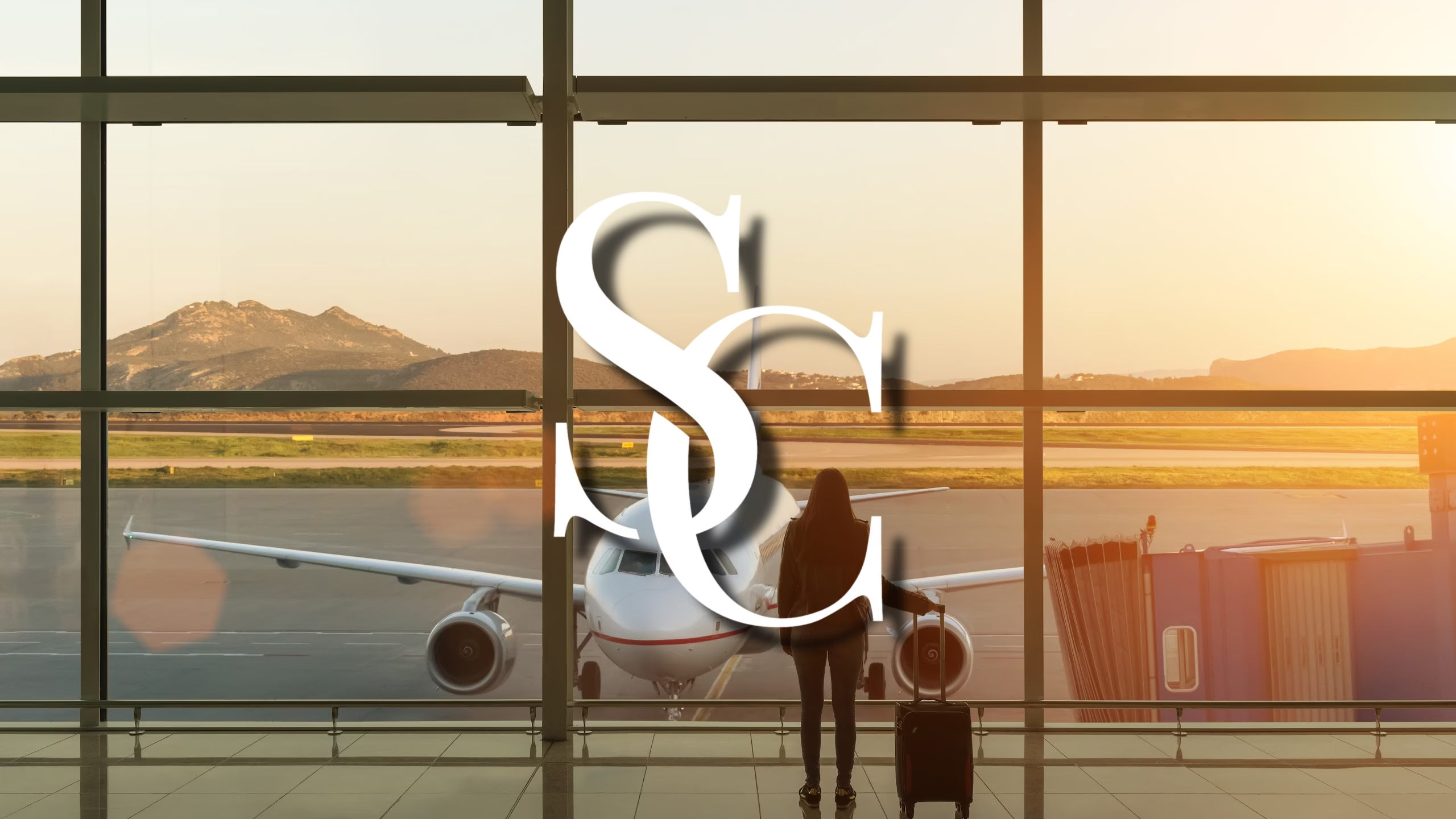
SOBER TRAVEL – WHAT A TRIP! is The Sober Curator’s guide to exploring the world alcohol-free. From insider travel tips and honest destination reviews to our curated Sober Retreats Calendar, we help you plan trips that are fun, fulfilling, and booze-free. Whether your jet-setting overseas or planning a weekend getaway, our stories and resources prove that sober travel is anything but boring. Looking for a sober getaway? We’ve got your back with our Sober Retreat Calendar. Need a night out on the town? Check out our Sober Events Calendar.
We also recommend soberscribing to The Sober Sip for weekly and monthly travel + events updates. Have a life-changing sober trip to share? Send your tips and photos to thesobercurator@gmail.com—we’d love to feature your journey.
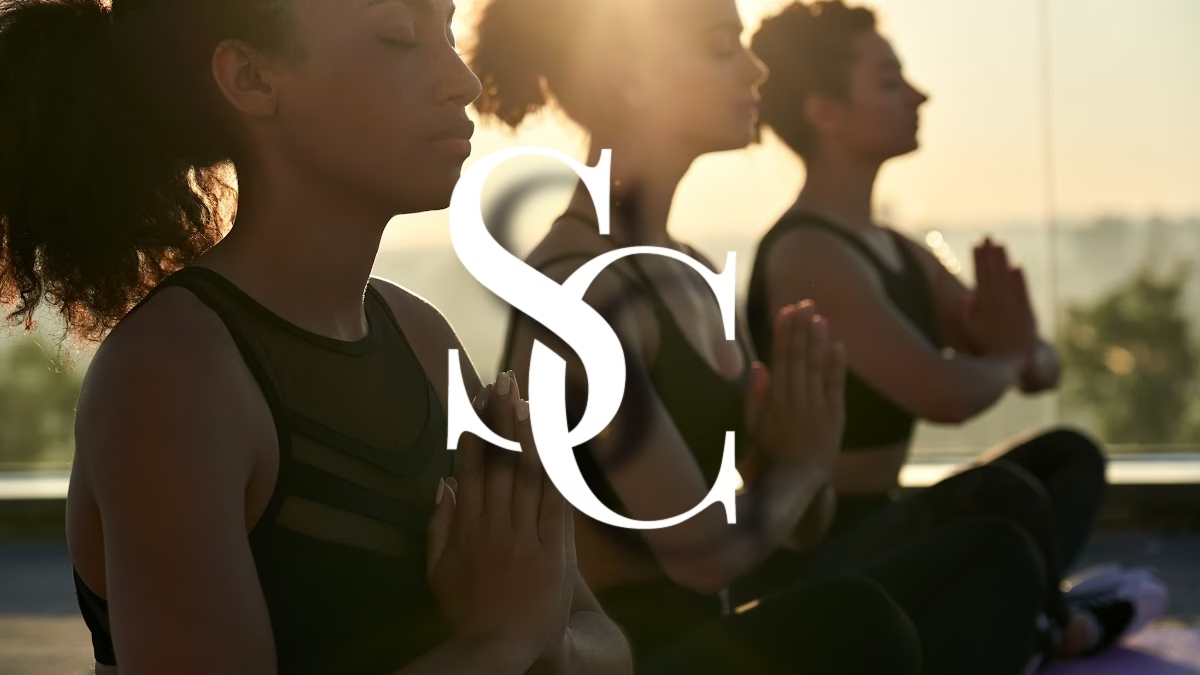
SOBER RETREATS: with Senior Travel Sober Curator Contributor Teresa Bergen is your go-to space for alcohol-free travel tips, insider guides, and honest reviews from a sober perspective. Teresa blends her passions—animals, wildlife conservation, sustainability, geography, culture, outdoor adventure, and yoga—into enriching travel stories that inspire mindful exploration. From kayaking and hiking to visiting historic cemeteries and sacred spaces, she uncovers the beauty where history, art, and spirituality meet.
Planning a sober retreat? Fill out our Sober Retreats Form or email Teresa at Teresa.Bergen@gmail.com with your retreat name, dates, cost, URL, and a horizontal, high-res image for our calendar listing. Sober Events more your style? Click HERE.
You’ve got mail from The Sober Curator

Resources Are Available
If you or someone you know is experiencing difficulties surrounding alcoholism, addiction, or mental illness, please reach out and ask for help. People everywhere can and want to help; you just have to know where to look. And continue to look until you find what works for you. Click here for a list of regional and national resources.





